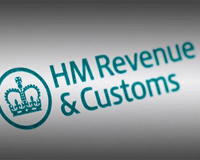Lisa Bevan comments on the end of the CGT exemption for non-residents
Key points
- From 5 April 2015 a new CGT charge will apply to sales of UK residential property by non-residents
- A modified form of principal private residence relief will be available, but caution will be needed in applying for this
- In parallel with previous reforms this represents a significant step up in the complexity of UK residential property tax rules
The government recently confirmed it will be pressing ahead with the introduction of capital gains tax (CGT) on gains made by non-residents disposing of UK residential property from April 2015. At present, those who live in the UK pay CGT when they sell a property that is not their main residence, but those who do not live here do not. The government has described this as a “significant unfairness within the UK’s CGT and property tax regime.”
The changes represent a radical departure from the existing rules under which foreign investors enjoy full exemption from CGT on gains made on the disposal of their UK residential properties. What are the practical implications for non-residents and their advisors?
Effect of the new rules
The new CGT charge will apply to non-resident individuals, non-resident trustees, non-resident partners of partnerships and non-resident companies disposing of UK residential property from 5 April 2015. Only gains accruing after that date will be covered; gains accrued prior to 5 April 2015 will not be within the scope of the new rules. It is therefore recommended that existing owners obtain a valuation as at 5 April for future record-keeping and reporting purposes.
The charge will apply to residential property and not commercial property. Residential property will be defined as property suitable for use as a dwelling. Property which is in the process of being constructed or adapted for use as a dwelling (including off-plan purchases) will be included. Communal residential property such as nursing homes and student accommodation will generally be excluded from the charge.
Non-resident owners holding property as an investment for a letting business will be caught. To that extent, the new rules differ from the annual tax on enveloped dwellings (ATED), which provides a relief for property let to third parties on a commercial basis.
Rates, allowances and reliefs
The rates of tax will be:
● 18% or 28% for individuals, depending on the person’s total income and chargeable gains for the tax year of disposal; the annual exemption will be available.
● 28% for non-resident trustees and a maximum of half the individual annual exemption.
● 20% for companies; indexation relief will be available.
Non-residents who occupy a UK residential property as their main residence will not have to pay CGT on its disposal as they will be eligible for a modified form of principal private residence relief (PPR). However, the non-resident will need to satisfy the 90-day rule in that particular tax year: this means that an individual must have spent at least 90 nights in the property for every year for which PPR is claimed. Anyone who is on the cusp will need to ensure that they keep a detailed record of time spent in the UK.
This will present some non-residents with the chance to escape the charge, although satisfying the 90-day rule will mean a further UK tie for the purposes of the UK’s statutory residence test. This may potentially nudge that person into being treated as a UK resident for tax purposes (and therefore subject to UK tax on their worldwide income and gains). PPR will need to be considered with a note of caution.
A spouse or civil partner’s occupation will count as occupation by the other. PPR will also be available to trusts where a beneficiary meets the relevant criteria for residence or the 90-day rule.
PPR will continue to be available for UK residents disposing of their main residence, but if they dispose of a property abroad then, subject to fulfilling the existing criteria for PPR, they will also need to satisfy the 90-day rule; this is a new requirement.
Likely impact
Commentators are divided on whether the changes are likely to have any real impact on the prime central London market, which has been largely untouchable in the past few years. Wealthy foreigners have seemed unfazed by myriad tax changes, from increases to the rates of SDLT to the implementation of ATED.
It is estimated that 70% of all new-build properties sold in the year to June 2013 (and 30% of all London properties valued at more than £1m) were to non-UK residents and the changes are unlikely to be welcomed by these investors. However, the status of a London home in the right location and the perception of London property as a safe haven investment mean that there is unlikely to be an offload of property before April 2015, or a significant cooling of the market generally.
In the run-up to 5 April, tax lawyers will be busy advising existing owners on the effect of the new rules and any opportunities for restructuring, as well as the detail of the new reporting and collection requirements: HMRC will need to be notified within 30 days of a disposal, by which point any tax due must be paid. The new rules, taken with the recent changes to the rates of SDLT – running in parallel with ATED – mean that the UK tax rules applying to residential property are going to become much more complex, with potential traps for the unwary.
Lisa Bevan is a senior associate in the private client team at Taylor Wessing








